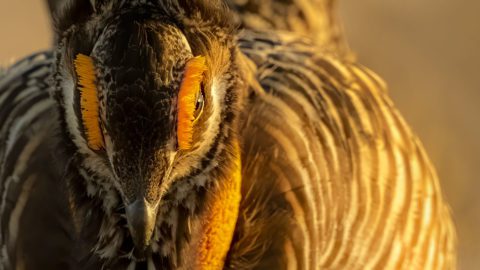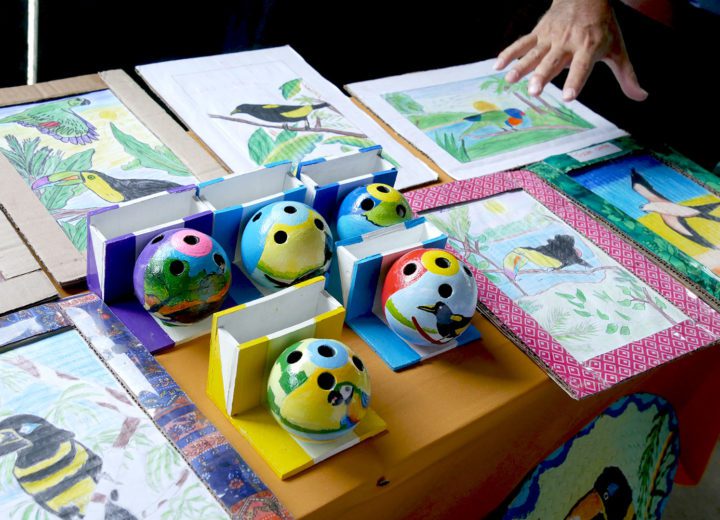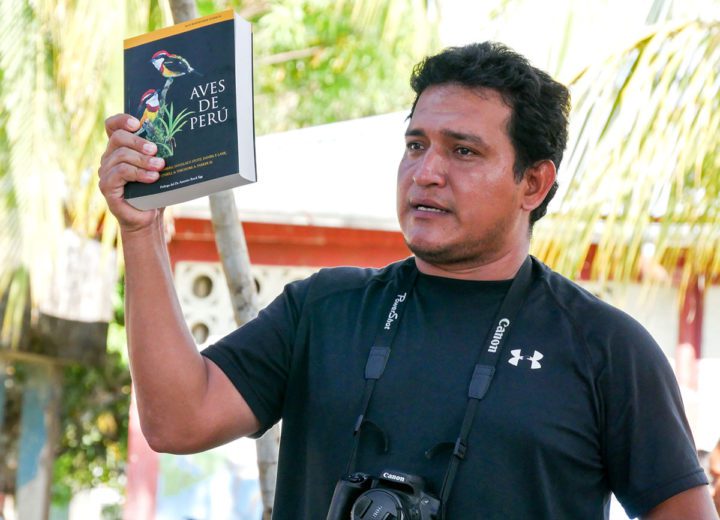In Peru, a Celebratory Revolution Inspired by Birds
By Brian Landever; photos by Marilú López-Fretts
March 30, 2020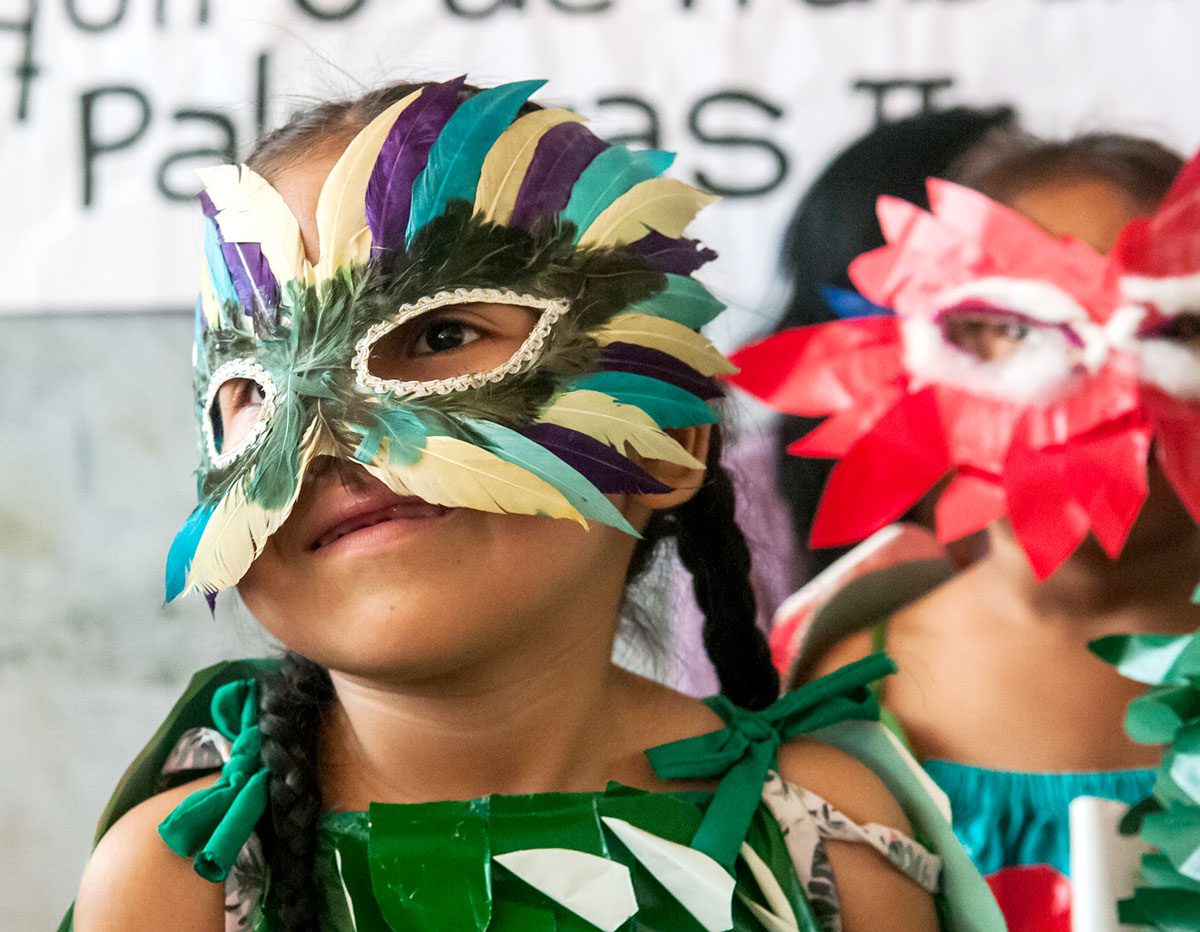
From the Spring 2020 issue of Living Bird magazine. Subscribe now.
NOTE: A version of this essay was previously published on the environmental news website Mongabay under the headline A Celebratory Kind of Revolution.
They left at five o’clock in the morning and traveled all day, sitting in their dugout canoes with outboard motors (called peke-pekes by the locals) under the punishing tropical sun—all to attend a meeting.
One thousand Peruvians from rural, indigenous, and mestizo communities far and wide came for a celebration of rainforest birds. They braved the heat for hours on end, but they made it. The meeting last September was the first bird festival in Loreto, Peru.
For mothers and fathers to pack up and bring their children many kilometers away to another village to talk about, well, birds, was incredible. Amazing. And totally unprecedented. It was chevere, or really good.
This bird festival is the culmination of three years of activities among 55 rural, Amazonian communities focused on regional bird studies, resulting in such concern for birds and their habitat that a kind of revolution is building amongst the thousands of students involved. It’s a celebrative kind of revolution, raising spirits and enhancing cultural arts. Children are showing excitement for the natural world, and their parents are following suit.
It’s in good time. Peru is home to more than 1,800 bird species and has been listed among the world’s best countries for bird watching. But at a time when many political and industrial leaders view the Amazon as a huge, untapped extractive industry basin—whether for logging, gold mining, or gas and oil drilling—that rural people came together to talk about birds and conservation was nothing short of miraculous.
For more than 100 years, the daily existence for the Amazonian communities living along these rivers has been primarily focused on survival. For them, the forest offers a collection of resources that provide the substance of their lifestyle focused on fishing from dugout canoes, hunting animals ranging from caymans to tapirs, and building wooden housing structures.
But there has been a decrease in the fish and wildlife they rely on. The sharp decline has had numerous impacts, including forcing villagers to migrate to cities to seek unskilled jobs and dangerous deals with drug lords for fast cash. Occasionally, they are known to accept cash offers (well below market value) from big industries to extract resources found on their lands using the most destructive of methods.
Considering the pressure these people have from big industry’s heavy persuasion, their participation in a bird festival that celebrates nature conservation is absolutely miraculous. It has sparked a new movement in these communities about painstakingly passing on the opportunity for instant gains, and instead insisting that a healthy lifestyle be practiced and protected. And it’s the children who are leading this revolution, tomorrow’s decision makers.
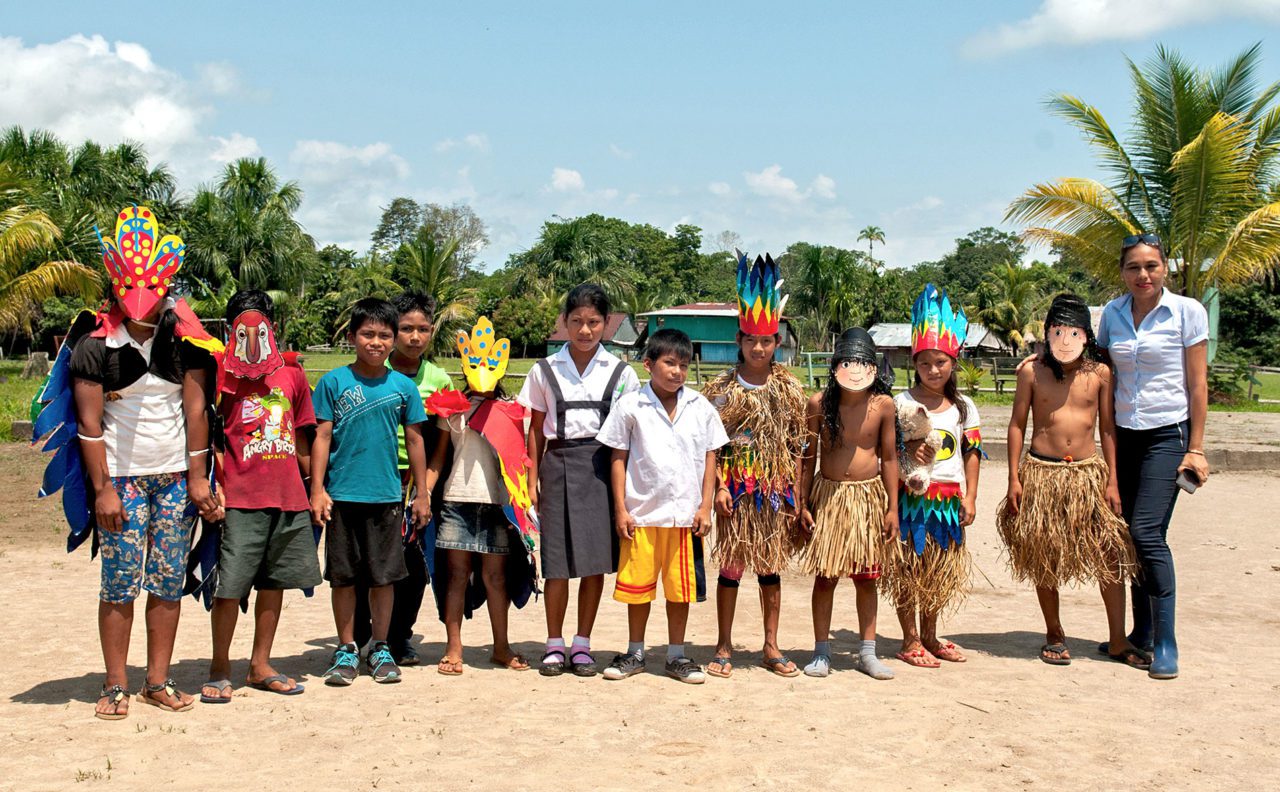
The students, from kindergarten through high school, who have become involved in this movement over the past several years were initially led by their teachers. Classes covered the region’s bird species’ habitat, behavior, nesting, diet, cultural stories, symbolic meanings of bird songs, and more.
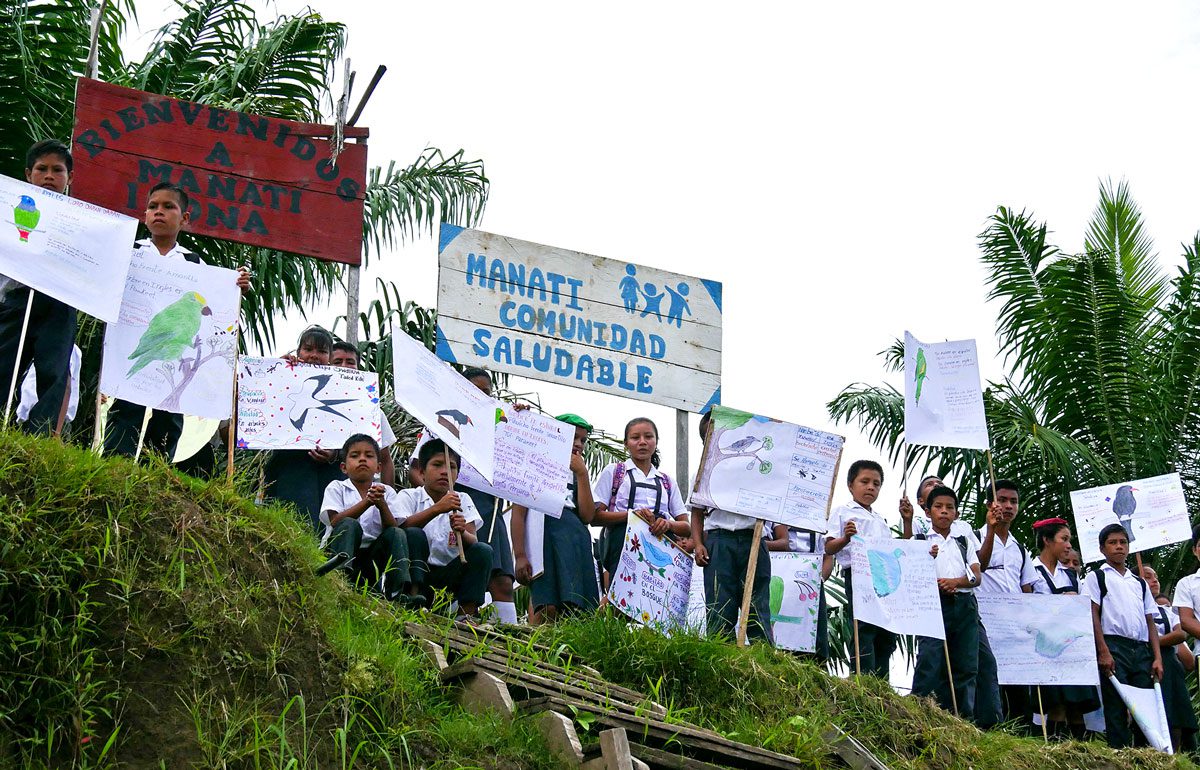
Many of these people live in communities without running water or electricity, and they fish daily for basic sustenance. Few of the parents have finished high school. Yet they came together to sing and rap and wax poetic about birds. Students performed plays, portraying birds fighting to retake their habitat after being encroached upon. Some hung up portraits of birds, while others made replicas of their nests. A high school senior rapped about birds’ beauty and the tragedy of losing them. A 14-year-old young woman’s poem about respecting birds in nature left normally reserved Peruvians teary-eyed. Third-graders sang songs about birds’ beauty. One mother even rose to share an unsolicited folk song about the Blue-gray Tanager.
The impact of this is showing immediately as more concern for birds. Children are heard stopping their classmates from killing birds, and their parents are reporting no longer hunting birds in unsustainable ways.
The bird festival was the culmination of three years of teaching, outreach, and community development. It was the result of a partnership between the nonprofit CONAPAC (the Civil Association for the Conservation of the Peruvian Amazon Environment) and citizen-science project collaborators Karen Purcell and Marilú López Fretts from the Cornell Lab of Ornithology. In partnership with Peruvian teachers, they developed lesson plans and thought long and hard on how to transmit passion and love of Peruvian tropical birds to primary and high school educators out in remote communities. Their focus was, first, to gain the educators’ trust by working side by side with them to co-create a meaningful project focused on birds, culture, stewardship, and science. There are not many widely distributed bird books in Peru, making it crucial to begin by writing a local bird guide in Spanish oriented toward the students’ education.
CONAPAC is based in the city of Iquitos, the gateway for many jungle tours into the northern Amazon wilderness. For more than 25 years CONAPAC has been working with local villages to provide clean water systems, orchards for economic development, educational materials, and to promote conservation, all the while developing relationships with the residents and teachers in the communities. This new pilot program in bird education, in partnership with the Cornell Lab ornithologists, now focuses on answering this question: How do you encourage rural people to try to save the rainforest? The answer, thus far successful, is by working in an equitable and inclusive manner, side by side with local communities, and emphasizing the need to reflect on, respect, and integrate indigenous culture from the region.
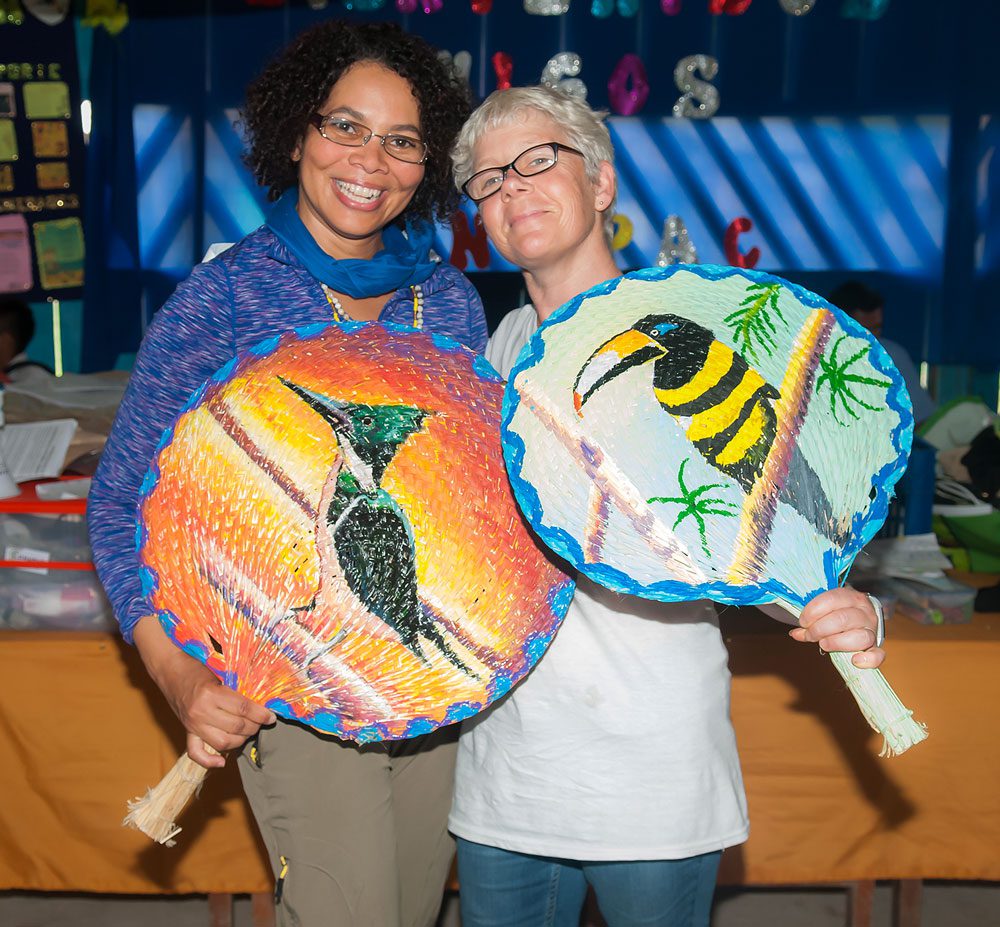
In 2017, Karen Purcell and the Celebrate Urban Birds citizen-science team from the Cornell Lab—which works around the world inspiring people who are underrepresented in the sciences to appreciate and study birds—launched an ornithology training workshop for teachers in these indigenous and mestizo communities. As the Peruvian teachers began enjoying their role in leading the classes, they then began contributing materials to the annual workshop lesson plans to build what has become a vibrant, culturally responsive education program focused on bird conservation and equitable community science. In 2018, the teachers began notably increasing their involvement following bimonthly meetings with the Cornell Lab team. A large WhatsApp social media group formed and began to receive hundreds of photos posted weekly by the teachers excited to share their progress—and in turn motivating one another.
In early 2019, there was no doubt that the program had matured when students presented, unsolicited, elaborate skits and dances related to bird conservation during CONAPAC’s visits to their communities. Thousands of photos of class developments began to fill the WhatsApp group monthly. The program’s supporters—the JBQ Charitable Foundation and the Amazon Binocular Project—have expressed pride for how their donations were used, and for supporting the program’s achievements.

Student paintings were displayed at an event in the Isla Tamanco indigenous community. The “Celebra las Aves en la Amazonía Peruana” bird festivals showcased local poetry, dances, plays, and artwork devoted to birds. Photo by Marilú López-Fretts. 
Birding guide César Sevillano shows a copy of the book Aves de Perú at a community event in Manatí I Zona. The Cornell Lab of Ornithology gifted a copy of the field guide to each participating community at the festival. Photo by Marilú López-Fretts.
When the last workshop was held in June 2019 on the Amazon and Napo Rivers, it was the Peruvian teachers who opened the event. They performed their own songs, hung up sketches of birds, and gave presentations of what their students had learned. At the time of this writing, thorough, co-created program evaluations are being led by the Cornell Lab team that will analyze the progress made. Initial signs are positive: The classes continue regularly, and the most interested students from each community are meeting in bird clubs. Thirty-six bird watching trails have been developed among the remote Amazonian communities reached by this project, and more are being planned. The first community-led bird festival in Loreto was held on October 30, 2019, uniting 11 communities and 600 people around bird conservation.
The potential for this program to have a positive environmental and social impact is clear. As it gains more attention in Peru and internationally, it will add momentum to the global movement to respect and conserve the Amazon rainforest. For bird appreciators, incorporating ongoing citizen-science data from students and community members will expand the eBird data from this region. If the Peruvian national board of education replicates the training and materials in other areas of Peru, the impact would multiply tremendously, further fueling the country’s strong efforts to be a prime tourist destination. If more bird festivals occur, celebrating birds could become a proud new tradition that marks the start of a general cultural trend toward sustainable living practices.
Regardless, what has happened over the past three years has given unforgettable, enjoyable memories to thousands of children in Peru, empowering them with activities that contribute to the wellness of the Amazon rainforest and the planet overall.
Brian Landever is the director of CONAPAC, a nonprofit group devoted to conservation and community development, in Iquitos, Peru.

All About Birds
is a free resource
Available for everyone,
funded by donors like you
American Kestrel by Blair Dudeck / Macaulay Library
